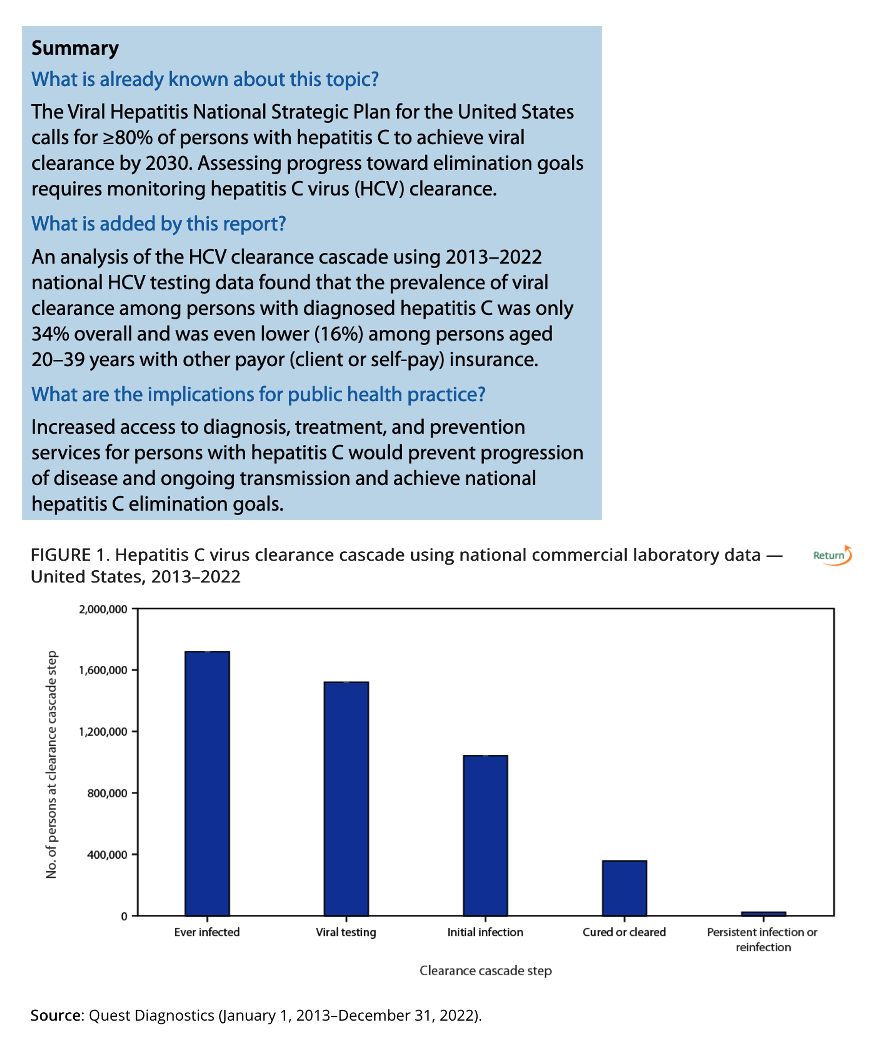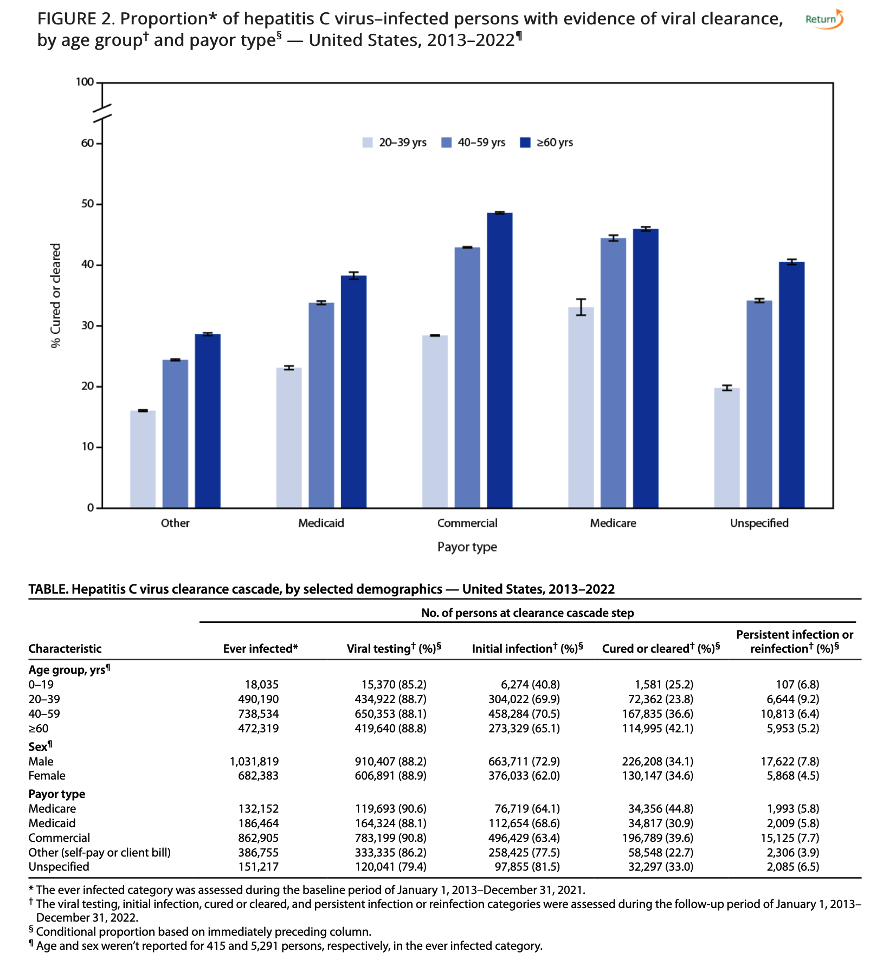| |
CDC Reports 34% or less HCV Cured - Hepatitis C Virus Clearance Cascade - United States, 2013-2022
|
| |
| |
Weekly / June 30, 2023
Carolyn Wester, MD1; Ademola Osinubi, MS1; Harvey W. Kaufman, MD2; Hasan Symum, PhD3; William A. Meyer III, PhD2; Xiaohua Huang, MS2; William W. Thompson, PhD1
Download the PDF here
Overall, viral clearance was lowest among persons aged 20-39 years (24%). Within this age group, those with other, unspecified or Medicaid payor type had lower viral clearance prevalences (16%, 20%, and 23%, respectively) than did persons with Medicare and commercial payors (33% and 29%, respectively). Similarly, persistent infection or reinfection was highest among persons aged 20-39 years (9%). These findings highlight the disproportionate need for increased access to hepatitis C treatment and prevention services among younger adults.
Among the approximately 1.0 million persons in this analysis with initial infection, only 34% had laboratory evidence of viral clearance. Persons with other, unspecified, or Medicaid payor type had lower viral clearance (23%, 33%, and 31%, respectively) than persons with Medicare and commercial payors (40% and 45%, respectively). These observations are consistent with recently published hepatitis C treatment coverage data among insured adults (9) and highlight the large gap between current viral clearance and the nation's goal of ≥80% viral clearance among persons with diagnosed hepatitis C by 2030 (3).
These data ONLY include people tested - "ever infected, defined as any receipt of a positive HCV test result". So many people are never tested and would not be included in this analysis making the 34% a higher number than in reality. Many more remain untested & untreated than this study identifies. PLUs in Figure 2 below you see lost rates in medicaid compared to commercial & medicare. Jules Levin, NATAP
During January 1, 2013-December 31, 2021, a total of 1,719,493 persons were identified as ever having been infected with HCV. During January 1, 2013-December 31, 2022, 88% of those ever infected were classified as having received viral testing; among those who received viral testing, 69% were classified as having initial infection; among those with initial infection, 34% were classified as cured or cleared (treatment-induced or spontaneous); and among those persons, 7% were categorized as having persistent infection or reinfection. Among the 1.0 million persons with evidence of initial infection, approximately one third had evidence of viral clearance (cured or cleared). This simplified national HCV clearance cascade identifies substantial gaps in cure nearly a decade since highly effective direct-acting antiviral (DAA) agents became available and will facilitate the process of monitoring progress toward national elimination goals. It is essential that increased access to diagnosis, treatment, and prevention services for persons with hepatitis C be addressed to prevent progression of disease and ongoing transmission and achieve national hepatitis C elimination goals.


| |
| |
| |
|
|
|